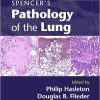EUS Pathology with Digital Anatomy Correlation 1st Edition
10 $
Delivery time: Maximum to 1 hours
by Manoop S. Bhutani (Author), John C. Deutsch (Author)
EUS Pathology with Digital Anatomy Correlation 1st Edition
by Manoop S. Bhutani (Author), John C. Deutsch (Author)
- Atlas of Pathologic lesions by Endoscopic Ultrasonography (EUS) is a dedicated text to learn pathologic images seen during EUS. The digital anatomy correlation used in this work is the natural continuation of efforts to apply the University of Colorado Visible Human data set to gastroenterology. The Visible Human data set was created by Dr. Vic Spitzer and colleagues at the University of Colorado and is currently housed at the universitys Center for Human Simulation. The data set consists of high resolution transaxial digital images captured as cadavers were abraded away at 1 mm or less depths. These images are compiled into blocks of data and each structure is identified. This information can be used to pull out and manipulate 3-D structures as well as allowing one to review planar anatomy in any orientation. Using the Visible Human dataset, one should be able to find a normal anatomy correlate to any image found during a EUS examination. However, as important as normal anatomy is, it is the abnormal features which are the crux of an EUS examination. Endosonographers are asked to define lumps, bumps, cysts to find correlates for symptoms and abnormal laboratory findings. Accuracy requires a tremendous amount of skill and experience. To help in this task, we have assembled chapters from a world-wide group of expert endosonographers. These authors have shared their insight and images to help the readers of this work better see and understand some of the complexities uncovered during a EUS evaluation.
|
Related Products
Basic Medical Book
Basic Medical Book
Caring For School-Age Children (Canadian Edition), 2nd Edition (PDF)
Basic Medical Book
Positive Learning Environments: Establishing and Sustaining Productive Classrooms, 3rd Edition (PDF)
Basic Medical Book
Basic Medical Book
Healthcare Coverage: Legislation, Outcomes and Universal Coverage (PDF)
Basic Medical Book
Basic Medical Book
Basic Medical Book
Basic Medical Book
Microencapsulation of Probiotics: Challenges and Future Prospects (PDF)
Basic Medical Book
Mental Pain: A Focus on Diagnoses and Treatments in Clinical Psychology and Psychiatry (PDF)
Basic Medical Book
Basic Medical Book
Airborne and Biological Monitoring to Assess Occupational Exposure to Isocyanates (PDF)
Basic Medical Book
Proton Therapy Physics (Series in Medical Physics and Biomedical Engineering), 3rd Edition (PDF)
Basic Medical Book
Proton Therapy Physics (Series in Medical Physics and Biomedical Engineering), 3rd Edition (EPUB)
Basic Medical Book
An Introduction to Generative Drug Discovery (Drugs and the Pharmaceutical Sciences) (PDF)
Basic Medical Book
An Introduction to Generative Drug Discovery (Drugs and the Pharmaceutical Sciences) (EPUB)
Basic Medical Book
Particulate Drying (Advances in Drying Science and Technology) (PDF)
Basic Medical Book
Particulate Drying (Advances in Drying Science and Technology) (EPUB)
Basic Medical Book
The Impact of Artificial Intelligence in Radiology (AI in Clinical Practice) (PDF)
Basic Medical Book
The Impact of Artificial Intelligence in Radiology (AI in Clinical Practice) (EPUB)
Basic Medical Book
Basic Medical Book
Basic Medical Book
Basic Medical Book
Basic Medical Book
Basic Medical Book
Basic Medical Book
Basic Medical Book
Basic Medical Book
Basic Medical Book
Basic Medical Book
Supramolecular Synthons in Crystal Engineering of Pharmaceutical Properties (EPUB)


 Principles and Practice of Operative Dentistry: A Modern Approach (Scanned PDF)
Principles and Practice of Operative Dentistry: A Modern Approach (Scanned PDF) 

























































































































